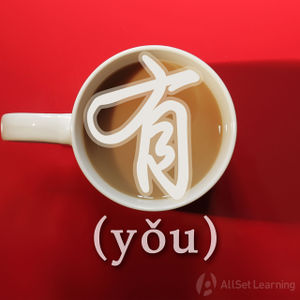Difference between revisions of "Expressing "in addition" with "haiyou""
| Line 5: | Line 5: | ||
== Structure == | == Structure == | ||
| − | It's as simple as using 还有 before the new clause or sentence. 还有 can also be used with a comma, similar to how we can say "in addition, . . ." in English. | + | It's as simple as using 还有 before the new clause or sentence. 还有 can also be used with a comma, similar to how we can say "in addition,..." in English. |
<div class="jiegou"> | <div class="jiegou"> | ||
| Line 35: | Line 35: | ||
[[Category: B1 grammar points]] | [[Category: B1 grammar points]] | ||
| − | {{Basic Grammar|还有|B1|Clause 1 , 还有 + (,)+ Clause 2|你 需要 吃 点 药。<em>还有</em>,要 多 休息。|grammar point|ASGHQRI1}} | + | {{Basic Grammar|还有|B1|Clause 1 , 还有 + (,) + Clause 2|你 需要 吃 点 药。<em>还有</em>,要 多 休息。|grammar point|ASGHQRI1}} |
{{Rel char|还}} | {{Rel char|还}} | ||
{{Rel char|有}} | {{Rel char|有}} | ||
Revision as of 08:32, 24 October 2016
-
Level
-
Similar to
- Expressing "and" with "he" (A1)
- Expressing "and also" with "hai" (A2)
- Expressing "except" and "in addition" with "chule… yiwai" (B1)
- Expressing "in addition" with "lingwai" (B1)
- Expressing "in addition" with "zaishuo" (B1)
- Expressing "not only... but also" with "budan... erqie..." (B1)
- Using "budan... geng" to express "not only... but also" (B2)
- Expressing "as well as" with "yiji" (C1)
-
Used for
-
Keywords
"还有" (háiyǒu) is used to express "in addition..." or "and also..." in a conversation. It is introducing new information to the topic the speaker is talking about, as an afterthought. While it's not the most challenging grammar structure, an important thing to keep in mind is that 还有 normally starts a completely new sentence or clause.
Structure
It's as simple as using 还有 before the new clause or sentence. 还有 can also be used with a comma, similar to how we can say "in addition,..." in English.
[Clause ],+ 还有 ,+ [Clause 2]
Examples
- 你 需要 吃 点 药。还有,要 多 休息 。You need to take some medicine. Also, you should get more rest.
- 你 跟 他 一起 去 吧。还有,别 忘 了 带 这 些 材料。Please go with him. Also, don't forget to bring these materials.
- 我 今天 要 考试。还有 ,我 必须 要 写 完 中文 作文。I’m going to have an exam today. Plus, I must finish writing my Chinese essay.
See also
Sources and further reading
Books



